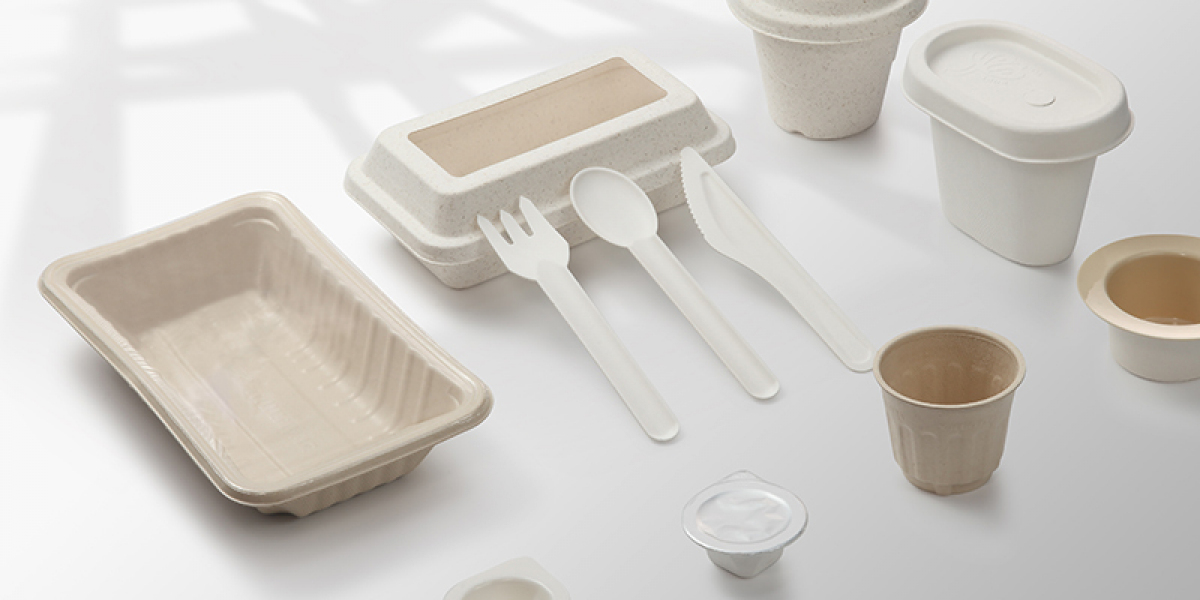As global attention on environmental sustainability intensifies, so does the search for viable alternatives to plastic. Plastic's durability, while advantageous for various uses, has led to immense ecological and health issues due to its inability to decompose naturally. Every year, plastic waste piles up in landfills and pollutes water bodies, causing severe harm to wildlife and ecosystems. In response, researchers and manufacturers have turned to biodegradable materials to replace plastic. One of the most promising materials is bagasse—a fibrous byproduct of sugarcane processing.
Bagasse is increasingly viewed as a sustainable solution, particularly in the food and packaging industries. But what makes bagasse such an effective alternative to plastic? Here, we explore the unique characteristics of bagasse, its environmental benefits, and the growing market for bagasse-based products, shedding light on why bagasse could play a central role in a sustainable future.
1. Understanding Bagasse: The Byproduct of Sugarcane Processing
Bagasse is a fibrous material left over after the juice is extracted from sugarcane stalks. Traditionally, sugarcane bagasse was burned as a fuel source or left to decompose, but as environmental awareness increased, the potential of bagasse as a raw material for sustainable products emerged. Its composition includes approximately 45-55% cellulose, 20-25% hemicellulose, and 18-24% lignin, making it strong and durable enough to be molded into different shapes.
This strength and malleability allow bagasse to be converted into various products, from disposable plates and cups to packaging trays, making it a versatile and eco-friendly option for manufacturers. In recent years, many bagasse products manufacturers have focused on using this material as a sustainable plastic alternative, and its popularity has surged, especially among environmentally conscious consumers.
2. Key Properties of Bagasse That Make It Sustainable
Bagasse’s intrinsic properties make it particularly suitable for packaging and other disposable items that would otherwise be made from plastic. Some of the standout features include:
a) Biodegradability and Compostability
Unlike plastic, which can take hundreds of years to decompose, bagasse decomposes naturally and quickly, typically breaking down in a matter of weeks when composted. It’s both biodegradable and compostable, meaning that it breaks down without leaving harmful residues behind, enriching the soil instead. This capability is critical in reducing landfill waste, as bagasse products can return to the ecosystem as nutrient-rich compost.
b) Heat Resistance and Insulation
Bagasse also possesses excellent heat resistance. It can withstand temperatures up to 200°F (93°C), making it ideal for hot food containers and microwavable products. It also acts as an effective insulator, which is an essential characteristic for items like coffee cups, as it keeps hot liquids warm without transferring too much heat to the holder's hand. The resistance and strength of bagasse provide a functional advantage over plastic and paper products, which may warp or become unstable when exposed to heat.
c) Water and Oil Resistance
Bagasse products have a natural resistance to both water and oil, eliminating the need for chemical coatings. Plastic often requires additional processing to handle moisture and oils, which can make it less environmentally friendly. On the other hand, bagasse packaging holds up well without added treatment, making it even more sustainable.
3. Environmental Benefits of Bagasse as a Plastic Alternative
The environmental benefits of bagasse go beyond its physical properties. Switching from plastic to bagasse products can contribute significantly to environmental sustainability in the following ways:
a) Reduction in Plastic Waste
Every year, millions of tons of plastic waste pollute our environment. Plastic not only takes centuries to degrade, but it also releases harmful microplastics and chemicals during its breakdown process, affecting wildlife and human health. In contrast, bagasse products naturally decompose without leaving a toxic trace. By replacing single-use plastic items with bagasse alternatives, we can significantly reduce the volume of waste entering landfills and oceans.
b) Lower Carbon Footprint
The production process for bagasse products requires fewer resources and less energy than plastic manufacturing. Bagasse, being a byproduct of sugarcane, does not require additional land or water resources. Plastic, on the other hand, is derived from petroleum, a non-renewable resource, and its production emits greenhouse gases. By opting for bagasse-based products, we can lower our carbon footprint, reducing overall greenhouse gas emissions and contributing to climate change mitigation.
c) Utilizing Agricultural Waste
Utilizing bagasse as a raw material helps reduce agricultural waste. Millions of tons of bagasse are produced annually in sugarcane-producing countries like Brazil, India, and Thailand. Instead of burning it or letting it decay, this agricultural residue can be repurposed to produce environmentally friendly products. This shift helps minimize waste and fosters a circular economy by using every part of the sugarcane plant.
4. Bagasse in the Food and Packaging Industry
The food and packaging industry has been one of the largest adopters of bagasse, recognizing it as an ideal material for single-use containers and cutlery. Not only are bagasse containers sturdy and able to hold hot and cold foods, but they also appeal to environmentally conscious consumers. The rise of eco-friendly restaurants and zero-waste grocery stores has further boosted demand for bagasse products.
a) Bagasse Packaging Solutions
Bagasse’s use in packaging has grown as businesses seek sustainable alternatives to plastic for their products. Bagasse packaging manufacturers have developed a wide range of products, from trays and bowls to clamshell containers, which are particularly popular for takeout and delivery services. Many consumers are now actively seeking out bagasse packaging options as a way to support the environment while enjoying the convenience of disposable packaging.
b) Growth of Bagasse in Sustainable Foodservice
The foodservice industry has embraced bagasse products due to their functionality and environmental benefits. Compared to paper or plastic, bagasse provides a superior option in terms of sustainability, especially for restaurants, cafes, and event organizers that aim to reduce their ecological footprint. With its high biodegradability, compostability, and natural resistance to heat and moisture, bagasse has become the go-to option for sustainable foodservice solutions.
5. Challenges and the Future of Bagasse Products
While bagasse holds tremendous potential, it also faces certain challenges. The manufacturing of bagasse products can be costly, especially compared to plastic. Bagasse is also more sensitive to moisture than plastic, which can limit its use in certain applications.
However, as demand grows, it is likely that technological advancements will improve the efficiency and cost-effectiveness of bagasse product manufacturing. Governments are increasingly incentivizing companies to switch from plastic to biodegradable materials, creating a favorable environment for bagasse growth. Moreover, the continued efforts of sugarcane bagasse products manufacturers and environmental advocates are expected to improve the market for bagasse-based products.
Conclusion: Why Bagasse Could Be the Future of Sustainable Packaging
Bagasse has emerged as a compelling alternative to plastic due to its biodegradable nature, heat resistance, and versatility. As the world faces mounting environmental challenges from plastic waste, bagasse offers an eco-friendly solution that supports a circular economy by repurposing agricultural waste. The shift toward bagasse-based products is more than a trend it represents a broader movement toward sustainable practices that benefit both businesses and the environment.
Through the concerted efforts of bagasse products manufacturers and environmentally focused consumers, bagasse is positioned to revolutionize the disposable products industry. While challenges remain, advancements in manufacturing and an increase in environmental awareness indicate a bright future for bagasse in a world increasingly dedicated to sustainability.









